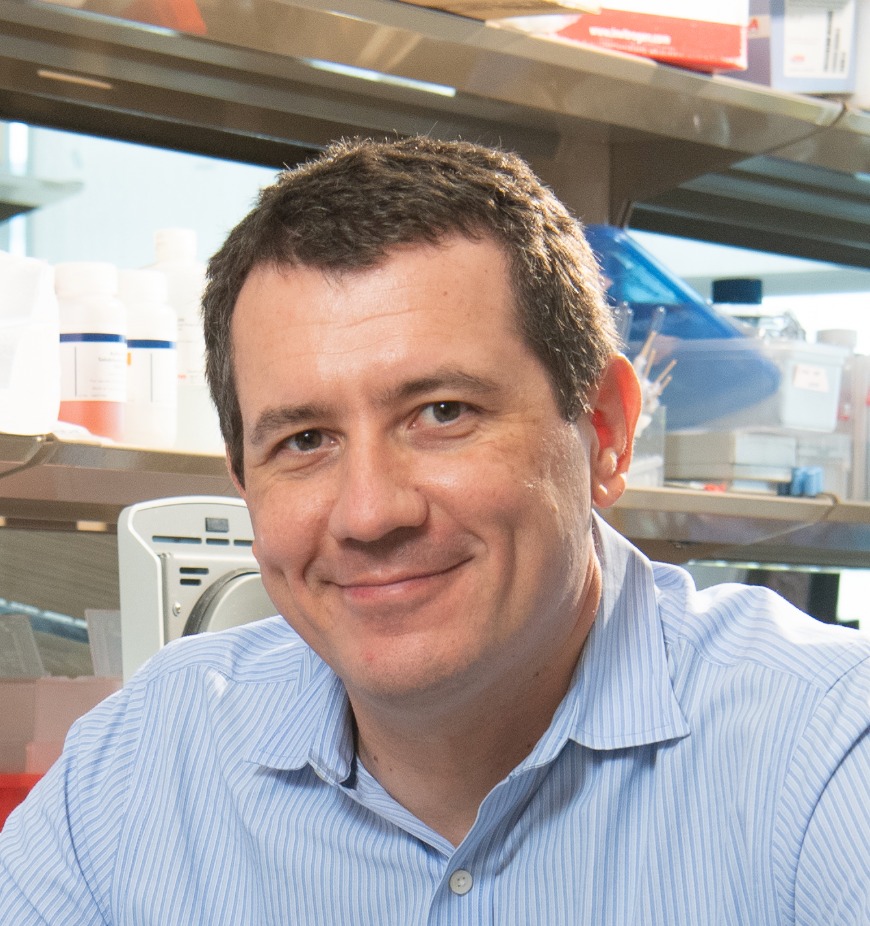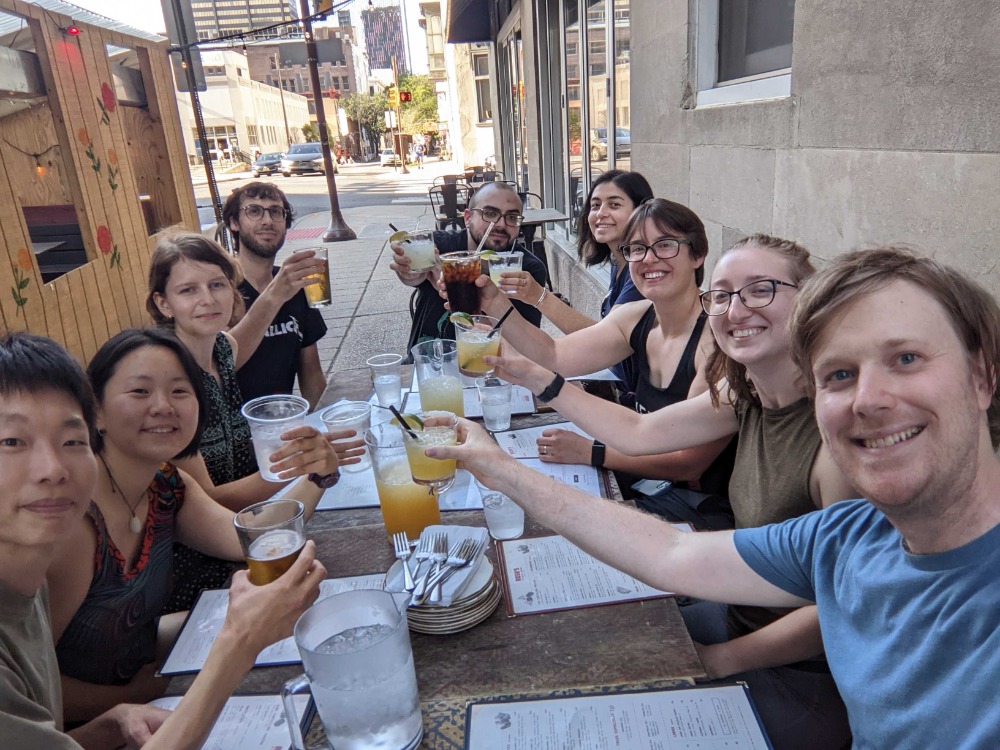
Roberto Bonasio, Ph.D.
University of Pennsylvania
The Perelman School of Medicine
Department of Cell and Developmental Biology
Office: Smilow 9-111
Lab: Smilow 9-182
3400 Civic Center Blvd
Philadelphia, PA 19104

1. Chromatin complexes and noncoding RNAs
The maintenance of epigenetic memory critically relies on proper targeting of complexes that modify chromatin structure. A key question is how are these complexes targeted to the proper genomic regions in different lineages. Using protein biochemistry and next generation sequencing, I discovered that multiple proteins of the Polycomb group, critical for epigenetic repression, bind to RNA and that their RNA binding activity contributes both to chromatin localization and to regulation of PRC2 activity at specific genes (Kaneko 2013). More recently, I have adapted my protein–RNA interaction mapping technique to identify additional regions of PRC2 that interact RNA and found the protein surface likely responsible for the RNA-mediated inhibition of its activity (Zhang 2019). Because we identified RNA-binding sites on both “flavors” of PRC2 (PRC2.1 and PRC2.2) we also investigated their function, discovering distinct contribution of these two complexes to the epigenetic changes that occur during neural differentiation (Petacovici 2021). We also discovered the RNA-binding activity of another chromatin modifier, TET2, and found that this enzyme regulates levels of small noncoding RNAs derived from tRNAs (He 2020). Our studies on Polyomb
Kaneko S, Son J, Shen SS, Reinberg D†, Bonasio R†. PRC2 binds active promoters and contacts nascent RNA in embryonic stem cells. Nature Structural and Molecular Biology 2013;20:1258–64. PMID: 24141703; PMCID: PMC3839660.
Zhang Q*, McKenzie NJ*, Warneford-Thomson R*, Gail EH, Flanigan SF, Owen BM, Lauman R, Levina V, Garcia BA, Schittenhelm RB, Bonasio R†, Davidovich C†. RNA exploits an exposed regulatory site to inhibit the enzymatic activity of PRC2. Nature Structural and Molecular Biology. 2019;26:297. PMID: 30833789.
He C†, Bozler J, Janssen KA, Wilusz JE, Garcia BA, Schorn AJ, Bonasio R†. TET2 chemically modifies tRNAs and regulates tRNA fragment levels. Nature Structural and Molecular Biology 2020; doi:10.1038/s41594-020-00526-w. PMID: 33230319.
Petracovici A, Bonasio R. Distinct PRC2 subunits regulate maintenance and establishment of Polycomb repression during differentiation. Molecular Cell 2021; doi:10.1016/j.molcel.2021.03.038. PMID: 33887196.
2. Epigenetics of social behavior in ants
My ultimate research goal is to understand how epigenetic processes of gene regulation impact complex organism-level phenomena such as brain function and behavior. To this end, since my postdoctoral work I have led efforts to develop ants as experimental organisms for neuroepigenetic research. Ant workers and queens exhibit dramatically different morphologies, lifespans, and behaviors, which are encoded by the same genome and, therefore, must be specified at the epigenetic level. With our high-quality assemblies of the ant genomes and annotation of coding and non-coding genes (Shields 2018), as well as the recent demonstration of feasibility of reverse genetics by genome editing, we have contributed to establish Harpegnathos saltator as a molecular model system for neuroepigenetic research. Our transcriptomic analyses combined with genetic and social manipulations revealed key roles for neuropeptides (Gospocic 2017) and steroid hormones (Gospocic 2021) in establishing and maintaining distinct neurotranscriptomes in the different castes. We also discovered that social reprogramming in Harpegnathos causes extensive cellular plasticity in the brain, including the expansion of a neuroprotective glia population (Sheng 2020), which has spurred my interest in a new direction for my research: aging and neurodegeneration.
Gospocic J, Shields EJ, Glastad KM, Lin Y, Penick CA, Yan H, Mikheyev AS, Linksvayer TA, Garcia BA, Berger SL, Liebig J, Reinberg D, Bonasio R. The neuropeptide corazonin controls social behavior and caste identity in ants. Cell 2017;170:748. PMID 28802044; PMCID: PMC5564227.
Shields EJ, Sheng L, Weiner AK, Garcia BA, Bonasio R. High-quality genome assemblies reveal long non-coding RNAs expressed in ant brains. Cell Reports 2018;23:3078. PMID 29874592; PMCID: PMC6023404.
Sheng L*, Shields EJ*, Gospocic J, Glastad KM, Ratchasanmuang P, Raj A, Little S, Bonasio R. Social reprogramming in ants induces longevity-associated glia remodeling. Sci Adv 2020;6: eaba9869. PMID 32875108; PMCID: PMC7438095.
Gospocic J*, Glastad KM*, Sheng L, Shields EJ, Berger SL‡, Bonasio R‡. Kr-h1 maintains distinct caste-specific neurotranscriptomes in response to socially regulated hormones. Cell 2021;184:5807. PMID: 34739833.
3. Technology development
Throughout my career I have been actively engaged in developing new technologies. Some of them became part of the studies described above and below, others were reported on their own. The first primary publications originating from my own lab were a novel method to detect protein–RNA interactions based on their proximity and not their affinity (Beck 2014) and a mass spectrometry screen to map the RNA-binding sites of hundreds of known and novel RNA-binding proteins in the nucleus of embryonic stem cells (He 2016). My lab was also an early adopter of high-throughput single-cell RNA sequencing techniques (e.g. Drop-seq) and helped other laboratories on campus to obtain access to this technology (Nicetto 2019). Most recently, we developed a new technique to map R-loops (Yan 2019).
Beck D*, Narendra V*, Drury WJ 3rd, Casey R, Jansen PW, Yuan ZF, Garcia BA, Vermeulen M, Bonasio R. In vivo proximity labeling for the detection of protein–protein and protein–RNA interactions. Journal of Proteome Research 2014;13:6135. PMID: 25311790; PMCID: PMC4261942.
He C, Sidoli S, Warneford-Thomson R, Tatomer DC, Wilusz JE, Garcia BA, Bonasio R. High-resolution mapping of RNA-binding regions in the nuclear proteome of embryonic stem cells. Molecular Cell 2016;64:416. PMID: 27768875; PMCID: PMC5222606.
Nicetto D, Donahue G, Jain T, Peng T, Sidoli S, Sheng L, Montavon T, Becker JS, Grindheim JM, Blahnik K, Garcia BA, Tan K, Bonasio R, Jenuwein T, Zaret KS. Loss of H3K9me3 heterochromatin at protein coding genes enables developmental lineage specification. Science 2019;363:294. PMID: 30606806; PMCID: PMC6664818.
Yan Q*, Shields EJ*, Bonasio R†, Sarma K†. Mapping native R-loops genome-wide with a targeted nuclease approach. Cell Reports 2019;179:953. PMID 31665646; PMCID PMC6870988.
4. Migratory routes of dendritic cells
In my graduate studies in immunology, I discovered that dendritic cells sample antigens in the periphery and, rather than migrating to primary lymphoid tissues, reenter the circulation to reach distant sites of action (Cavanagh 2005, Bonasio 2006). These discoveries challenged the long-held view that dendritic cells only traverse a unidirectional route from the blood to the peripheral tissues and from here to lymphoid organs, and suggested entirely new mechanisms by which central tolerance could be achieved and immunological memory reactivated. I also developed a new technique to covalently label T lymphocytes with quantum dots for in vivo visualization by intravital multiphoton microscopy (Bonasio 2007). Although less relevant for my current area of research, my studies in immunology demonstrate the breadth of my training and provide me with a valuable skill set in imaging, mouse genetics, and in vivo approaches that is typically lacking in more conventionally trained researchers in biochemistry and functional genomics.
Cavanagh LL*, Bonasio R*, Mazo IB, Halin C, Cheng G, van der Velden AW, Cariappa A, Chase C, Russell P, Starnbach MN, Koni PA, Pillai S, Weninger W, von Andrian UH. Activation of bone marrow-resident memory T cells by circulating, antigen-bearing dendritic cells. Nature Immunology 2005;6:1029–37. PMID: 16155571; PMCID: PMC1780273.
Bonasio R, Scimone ML, Schaerli P, Grabie N, Lichtman AH, von Andrian UH. Clonal deletion of autoreactive thymocytes by circulating dendritic cells homing to the thymus. Nature Immunology 2006;7:1092–100. PMID: 16951687.
Bonasio R, Carman CV, Kim E, Sage PT, Love KR, Mempel TR, Springer TA, von Andrian UH. Specific and covalent labeling of a membrane protein with organic fluorochromes and quantum dots. Proceedings of the National Academy of Sciences 2007;104:14753. PMID: 17785425; PMC1976196.
*Equal contributions
†Co-corresponding authors
Research Interest
The Bonasio Lab investigates the contribution of epigenetic gene regulation to brain function, with a focus on the role of noncoding RNAs. We study these fundamental biological processes at a mechanistic level in mouse stem cells and neurons and at a functional level the brain of traditional and less traditional model organisms, such as ants, fruit flies, and planarians.
Lab Members
| FIRST NAME | LAST NAME | TITLE | |
|---|---|---|---|
| Roberto | Bonasio | PI | roberto@bonasiolab.org |
| Timothy | Christopher | Lab Manager | timoc@pennmedicine.upenn.edu |
| Johnny | Doherty | PhD Student (CAMB/G&E) | john.doherty@pennmedicine.upenn.edu |
| Segovia | Garcia | PhD Student (CAMB-DRSB) | Segovia.Garcia@pennmedicine.upenn.edu |
| Shagufta | Khan | Postdoc | khanshagufta2711@gmail.com |
| Lauren | Reich | PhD Student (CAMB G&E) | Lauren.Reich@pennmedicine.upenn.edu |
| Alessandro | Scaccetti | Postdoc | alessandro.scacchetti@pennmedicine.upenn.edu |
| Masato | Sorida | Postdoc | masato.sorida@pennmedicine.upenn.edu |
| Julia | Tasca | PhD Student (BMB) | jtasca@pennmedicine.upenn.edu |


